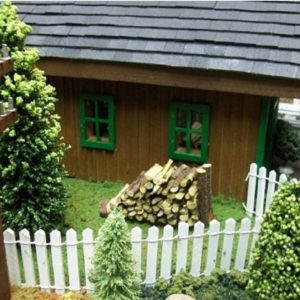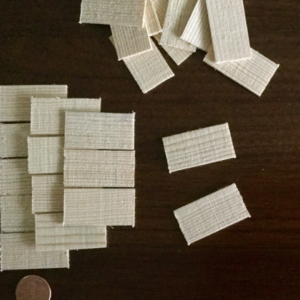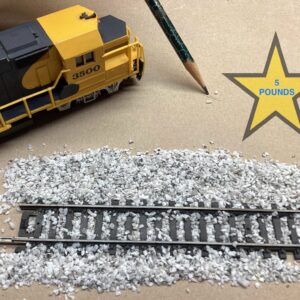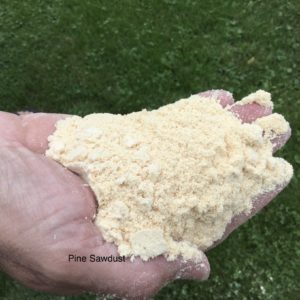This MINIATURE CHRISTMAS TREE – 7 Inch Tall Scenery is hand crafted in Western PA & comes complete with a base. The tree is pre-decorated with various colors that replicate lights on a tree. No two trees are alike so you will have an original work of art! Perfect for decorating your Christmas tree village, model railroad train layout, or your 1:12 scale dollhouse or mantels in your home. Brick walls and fireplaces sold separately. * Accessories in photos are NOT included.
If you enjoy making miniature scenery, you can find several ideas on Pinterest.
Modern ideas: The current, popular understanding of the term “diorama” denotes a partially three-dimensional, full-size replica or scale model of a landscape typically showing historical events, nature scenes or city scapes, for purposes of education or entertainment.
One of the first uses of dioramas in a museum was in Stockholm, Sweden, where the Biological Museum opened in 1893. It had several dioramas, over three floors. They were also implemented by the National Museum Grigore Antipa from Bucharest Romania and constituted a source of inspiration for many important museums in the world (such as the American Museum of Natural History in New York and the Great Oceanographic Museum in Berlin) [reference below].
Miniature
Miniature dioramas are typically much smaller, and use scale models and landscaping to create historical or fictional scenes. Such a scale model-based diorama is used, for example, in Chicago’s Museum of Science and Industry to display railroading. This diorama employs a common model railroading scale of 1:87 (HO scale). Hobbyist dioramas often use scales such as 1:35 or 1:48.
An early, and exceptionally large example was created between 1830 and 1838 by a British Army officer. William Siborne, and represents the Battle of Waterloo at about 7.45 pm, on 18 June 1815.[3] The diorama measures 8.33 by 6 metres (27.3 by 19.7 ft) and used around 70,000 model soldiers in its construction. It is now part of the collection of the National Army Museum in London.[4]
Sheperd Paine, a prominent hobbyist, popularized the modern miniature diorama beginning in the 1970s.[citation needed]
Full-size
A diorama in the Museum of Natural History in Milan (Italy)
Modern museum dioramas may be seen in most major natural-history museums. Typically, these displays use a tilted plane to represent what would otherwise be a level surface, incorporate a painted background of distant objects, and often employ false perspective, carefully modifying the scale of objects placed on the plane to reinforce the illusion through depth perception in which objects of identical real-world size placed farther from the observer appear smaller than those closer. Often the distant painted background or sky will be painted upon a continuous curved surface so that the viewer is not distracted by corners, seams, or edges. All of these techniques are means of presenting a realistic view of a large scene in a compact space. A photograph or single-eye view of such a diorama can be especially convincing, since in this case there is no distraction by the binocular perception of depth.
Uses
A 1/700 scale diorama of Japanese aircraft carrier Hiryū based on the left photo captured during the Battle of Midway
Miniature dioramas may be used to represent scenes from historic events. A typical example of this type is the dioramas to be seen at Norway’s Resistance Museum in Oslo, Norway.
Landscapes built around model railways can also be considered dioramas, even though they often have to compromise scale accuracy for better operating characteristics.
Hobbyists also build dioramas of historical or quasi-historical events using a variety of materials, including plastic models of military vehicles, ships or other equipment, along with scale figures and landscaping.
In the 19th and beginning 20th century, building dioramas of sailing ships had been a popular handcraft of mariners. Building a diorama instead of a normal model had the advantage that in the diorama, the model was protected inside the framework and could easily be stowed below the bunk or behind the sea chest. Nowadays, such antique sailing ship dioramas are valuable collectors’ items.
A genealogical diorama for an elementary school class project; the featured subject is a maternal great-grandfather of the student
One of the largest dioramas ever created[citation needed] was a model of the entire State of California built for the Panama-Pacific International Exposition of 1915 and that for a long time was installed in San Francisco’s Ferry Building.
Dioramas are widely used in the American educational system, mostly in elementary and middle schools. They are often made to represent historical events, ecological biomes, cultural scenes, or to visually depict literature. They are usually made from a shoebox and contain a trompe-l’œil in the background contrasted with two or three-dimensional models in the foreground.









Reviews
There are no reviews yet.